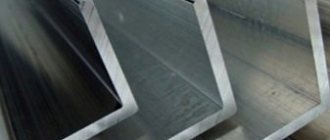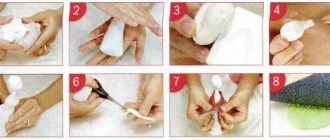Area of use of the tongue-and-groove connection
The tongue-and-groove fastening is used today in many areas. For example, it is used for laying almost all types of flooring, except linoleum and carpet. MDF, chipboard, and fiberboard boards are also connected in a similar way.
Due to the advantage of wood, such as environmental safety, it is much more often chosen than other materials to create various pieces of furniture (from a traditional kitchen chair to a simple wall in the hallway) and certain types of curtains (roller blinds, blinds).
Manufacturers of most of these products prefer tongue-and-groove technology.
The construction of various buildings from timber, the manufacture of a ceiling system, the installation of a roof - all these works cannot be completed without the use of a tenon joint.
Types of tongue-and-groove connections
Nowadays, a lot of options have been invented for how to attach wooden elements. According to the number of tenons, tenon fasteners are divided into:
- Single;
- Double;
- Multiple.
Depending on the form, such connections are:
- Rectangular;
- Round;
- Triangular;
- Serrated;
- Corner.
Another variety of interest is the swallowtail. It is valued for its practicality, beauty and relative simplicity.
It is necessary to select the configuration and dimensions based on the material used and the expected load level. The most popular tenon and groove are those with a large number of rectangular tenons. This method of fastening has two key advantages - ease of creation and versatility.
Specifics of the Japanese tongue-and-groove fastening
The Japanese have turned plumbing into a real art. Using traditional methods, combining various types of fastenings, they produce practical and reliable connections that do not require the addition of nails. Fixation of various wooden elements is carried out only due to the force of friction.
The secret to reliability is high cutting accuracy. Thanks to the perfect fit of the line of locks on the connected parts of the product, a strong technological unit is obtained. Due to the complexity of lock shapes, it is necessary to have the appropriate skills and knowledge.
Types of groove boards
Many users have no idea how to choose a groove in a board, believing that the store will offer them only one option for connection and material.
This is far from true; there you will be greeted by a large assortment:
1. Symmetrical groove. This is the simplest type. In it, the lengths of the upper and lower shelves are the same, and they protrude at the same distance.
Asymmetric connection
2. Asymmetrical groove. Here the upper shelves are longer than the lower ones.
3. Block house, used mainly for finishing walls and ceilings. The planks often imitate the relief of timber and have a semicircular or shaped profile on the front side.
4. Euro lining, just like block house, is often equipped with a relief pattern.
5. The decking board, made of wood and polymer, also has tongues and grooves that simplify installation.
Note! If you plan to mount walls that are not level, have protrusions and dents without a groove board, do not expect good quality from the result. The cladding will not lie flat, height differences and cracks are inevitable.
Recommendations from experts
Regardless of the chosen type, following these recommendations will allow you to obtain durable technological units for any structure:
- In order to make reliable and aesthetic connections, before starting work you need to carefully mark the workpieces. The necessary tools for this are a metal ruler, a square, a pencil/thicknesser.
- When marking a nest on the edge or end side of the product, the thickness of the workpiece must be divided into three equal parts: the outer two thirds will serve as the walls of the nest, while the middle third must be cut out.
- When creating a connection, you should first make the nests, and only then proceed to making suitable tenons. Adjusting the tenon is a simpler operation than changing the dimensions of the socket.
- The strength of the gluing will be much higher if the surfaces to be joined are carefully leveled.
- A well-made tenon should be easily inserted and sit firmly in the socket, removed with little effort, and not fall out when changing the position of the structure.
To fit a socket made with a drill or framer to a rectangular tenon, it is better to lightly file the corners of the socket with a chisel. Another solution would be to round the corners of the tenon element.
Useful DIY crafts
In order to make something useful, for example, a box, it is not necessary to have a whole arsenal of complex equipment and expensive tools. You can get by with a minimum of tools and mechanisms. To perform carpentry work you will need:
You can use absolutely anything as a material - for example, scraps of parquet boards, pieces of plywood and waste chipboards, but always at right angles. To simplify the work, you need to make a simple milling table. To process workpieces, you will need a large-diameter straight groove cutter. The process looks something like this. On a makeshift table, plan the ends of parquet board scraps. Mark the sides of the box and use a jigsaw to remove all excess.
You can connect the sidewalls together with a mustache. To do this, you need to mill the ends of the sidewalls with a conical cutter with an angle of 90 degrees. This can be done using a router. Thus, the ends of the sidewalls have the same bevels of 45 degrees. Next you need to make grooves in the sides for the bottom. For this, an end mill with a diameter of 6 millimeters is used, equal to the thickness of the plywood.
In order to make a tool box, it is necessary to strengthen the carpentry joint of the sides by inserting additional tenons. The operation is called cutting tenons with a hand router. It is very difficult to do it manually, so you need to make a simple device - a milling table. The principle of its manufacture is simple:
We invite you to familiarize yourself with the DIY headrest for a bath, dimensions
One of the most commonly performed carpentry operations is making paneling. It is performed with a special cutter. To perform the work efficiently, it is necessary to make a simple device for the tabletop of the milling device. To do this, you will need thick-layer plywood measuring 500 x 300 x 10 millimeters.
To exit the cutter, a hole with a diameter of 100 millimeters is cut. The parallel stop is attached to the table with clamps. The cutter is set taking into account the distance from the table surface to the sharp edge of the cutting tool of one millimeter. All sides of the workpiece are processed sequentially. The thickness of the panel is adjusted by lifting the cutter.
Using a hand router, it is very easy to create a furniture facade on the doors. To do this, you will need a shaped end mill, a copy sleeve and a plywood template. The technological process is very simple:
The result is a neat design of the furniture facade.
Subtleties of making a tenon joint
Any person with a minimum set of carpentry skills can cope with creating a tongue-and-groove fastening.
Especially if you first study information about the nuances of working on this mount:
- Spikes are best done using special high-precision tools. Such equipment will allow you to obtain tenons that best match the dimensions of the grooves.
- When creating products that do not require particularly careful joining of parts, manual work on the joints is allowed. The tenons should be made longitudinally to the grain of the wood.
- When making tenons on a plywood sheet, the tenon cavity can be of any thickness.
- After all the tenons have been cut, you need to check their dimensions and set the structure aside to dry for 24 hours.
Forming miter angles
One of the best ways to create corners of various volumetric products is a miter joint. It allows you to create a monolithic structure, hide the fibers of the end, thereby providing an attractive appearance. This method is suitable for a wide variety of products, but is most often used for the manufacture of frames and cabinet furniture parts.
To create a joint, cuts are made in each of the wooden parts at an angle equal to half the angle at which the workpieces meet. Most often, this angle is right, therefore, cuts are made at 45 degrees, however, the angle can vary widely. The work is performed according to the following algorithm.
First, mark out the details. It is important not to forget that the markings are made along the long side, otherwise you may not guess with the dimensions.
On the edges that will be connected, draw a line at the required angle. Using a combination square, the markings are transferred to each side of the workpiece. Then the cut is made, for which it is better to use an electric miter saw, but you can also work with a hand tool. When working with a hacksaw, it is important to control the cutting angle; it would be useful to use a block as a guide.
The finished parts are placed next to each other, checking the accuracy of the fit. Unevenness will have to be smoothed out with a hand plane, and the angle will have to be adjusted using sandpaper. Wood glue is applied to both surfaces, and the product is fixed using clamps. Additional strength can be achieved using nails. When working with a hammer, it is important to control the impact force so that the workpieces do not move.
Particularly critical connections are reinforced with bars that are glued into the inner corner. A joint that will not be visible can be additionally reinforced with a metal square.
The result of quality work will be a perfect seam. If a small gap has formed, it can be hidden by straightening the adjacent wood fibers using a smooth cylindrical surface. The shaft of a regular screwdriver is suitable for this.
Carving a tenon
To ensure the strength of the structure, the process of cutting the tenon must be approached after marking work. First you need to decide on the type of part to be manufactured and its location.
Based on the last feature, elements are divided into three types:
- Angular rings;
- Middle;
- Boxed.
In addition, it is necessary to resolve the issue of their quantity in the fasteners. The number of spikes depends on the thickness of the product. If this parameter does not exceed 40 mm, then one spike is enough. In other cases, they do 2–3.
What is a router and what is it for?
A hand router is a power tool, which is an electric motor with a collet for installing a cutting tool on a shaft. Integrated with it is a platform or base, a kind of desktop, which is capable of moving along guides and being fixed in a given position.
Using the platform, the cutting depth is set. There are two handles on the sides, by which the machine is held in the desired position or applied to the workpiece.
The milling cutter is designed for cutting parts made of different materials:
Using a hand router, different types of material processing can be performed. These include the following operations:
- Milling of recesses of various shapes - grooves, sockets, grooves and other elements;
- Profiling edges - creating shaped (curly) surfaces, milling quarters;
- Milling of special structural elements - recesses for hinges, locks, handles, tenons and sockets for them;
- Trimming curved and complex edges of furniture parts or special elements.
To ensure the accuracy and cleanliness of the cut, the design of the router has a lot of adjustment and adjustment elements. With their help they produce the following
Which is better: heated floors or radiators?
Warm floorBatteries
Important! For mass production of large volumes of products, a manual milling machine is not suitable. It is most rational to use it only for domestic purposes or in small workshops engaged in small-scale production of custom-made products.
Corner box connections
Boxes and boxes are assembled using box joints. They are made for a straight tenon, a dovetail tenon, and a round insert tenon (dowel). The types and sizes of box joints used in joinery and furniture products are shown in Fig.
a-UYA-1 (on a straight open tenon): S1=S3=6, 8, 10, 12 and 16 mm; S2 not less than 0.3S0; spike length l=S0; ,b - UYA-2 (open dovetail on the spike); S1=0.85S0; the resulting size is rounded to the nearest cutter diameter: 13, 14, 15, 16 and 17 mm; S2 - no more than 0.75S0; S3=(0.85...3)S0; a=10°; l=S0 it is allowed to connect with a dovetail tenon in a half-blind manner: in - UYA-3 (on a round insert tenon (dowel) open): d= 0.4S0; I= (2.5….6)d; I1 is greater than l by 1... 2 mm: l1 and b are not less than 2d; the number of dowels is at least 2; the resulting dowel diameter d is rounded to the nearest size 4, 6, 8, 10, 12, 16, 20 and 25 mm
Expert opinion
Strebizh Viktor Fedorovich, leading construction foreman
A hand router is a power tool, which is an electric motor with a collet for installing a cutting tool on a shaft. If you want to clarify something, please contact me!
Step-by-step instruction
- Mark the future element.
- Prepare the necessary equipment.
- Carry out cutting.
- Clean the walls.
- Adjust to the required dimensions.
Special tools are used for marking. It must be applied in 2 planes. At home, thorns are cut out with ordinary saws (bow saws).
If you don’t have such equipment, you can use a hacksaw. The surface of the manufactured tenon must be thoroughly cleaned with a file or sandpaper.
Then the finished insert tenon should be adjusted to the previously prepared groove and finally fixed.
The tenon joint is the most proven technology for fastening wooden parts. It is used in many areas of life, and after training it can be made with your own hands.
How to make a rectangular or oval groove in a log?
The type of connection based on the insertion of a tenon into a groove appeared in Europe almost simultaneously with floorboards and lining. The finishing material is simple and easy to install and has a lot of advantages. True, the cost is more expensive than ordinary boards and strips, but the joints are much neater, and the service life is much longer.
The groove connection increases the strength of the coating.
Tongue and groove
This connection consists of a narrow groove and a ridge formed by a fold on the inserted part. It is excellent for corner applications as it has more bonding surfaces, greater strength and rigidity than a simple seam joint.
To make such a connection, processing of both parts is required. First select the grooves with a mortise dial or a straight or helical router. Then form a ridge on the second one that fits tightly into the groove of the first one. Make several test joints on scraps to achieve the required assembly density.
Features of the work
Since independent work on cutting longitudinal grooves is impractical (it is much easier to purchase a tongue-and-groove beam, this will save you a lot of time and effort), we will look at how to make slots for partitions, frames, etc. There are several options, choose the one that is more convenient for you.
Tenon-groove-tenon timber is one of the most popular and sought after options among developers
This tool is very suitable for DIY work for the following reasons:
- The device is very simple and easy to use and can be used even by those who have never performed such work. The main thing is that the kit contains instructions; from it you will learn how to prepare the equipment for work and how to use it correctly to achieve the desired result;
- You can make a groove of many different shapes. The main thing is to purchase a cutter of the required configuration. What is important is that the work is carried out in one pass, additional refinement is not required as in other cases, and the quality of the groove is very high;
A correctly selected cutter will help you easily achieve the desired result.
- The kit always comes with a stop. this will save you from the question of how to cut a groove in a beam exactly; the tool will go at the same distance from the edge, which means the cut will be even. The most important thing is to set up the device correctly before work; then you won’t have to be distracted by it.
We suggest you familiarize yourself with How to make a sauna in a private house Before choosing a groove in the timber, move the emphasis to the required distance
Very mobile equipment that can be used for cutting elements of small thickness; it is also often used for the purposes discussed in our article, this is due to the following factors:
- Equipment mobility – parquet flooring weighs little and has compact dimensions. thanks to which they can be easily transported to the right place and cut even in limited space;
Mobility is the main advantage of this option
Advice! This saw is very convenient for making grooves in window and door openings, where there is little space and it is difficult to position yourself with a chainsaw or router.
- The workflow is simple - you mark the future grooves, and then cut along the lines. The depth is limited by the offset of the disc, remember this factor;
- After you have made the cuts, you need to use a hammer and chisel to remove the excess and level the cut. it is very important.
Working with a chainsaw
This type of tool is available at all sites where structures made of wooden beams are erected. therefore it can be used for our purposes as well.
Let's look at how to cut a groove in a beam with this tool:











